by Lorri | Jul 21, 2010 | UnCorked
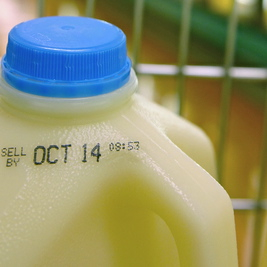 A few weeks ago I ran into a store and quickly grabbed a bottle of white wine. I was hot, it was chilled and dinner was desperately simple so not much thought went into my purchase.
A few weeks ago I ran into a store and quickly grabbed a bottle of white wine. I was hot, it was chilled and dinner was desperately simple so not much thought went into my purchase.
After opening the bottle at dinner and taking a sip, I had a poignant moment. Though only 1 year old, this white wine was well past its optimal freshness. Unlike milk, wine doesn’t come with an expiration date, which can sometimes lead to randomly grabbing a disappointing bottle.
Very few white wines are made to improve with age and most deteriorate quickly. When buying white wines not intended for long-term storage, always buy the most recent vintage. I am not referring to sacred Burgundies or cult chardonnays. This tip is for wines intended for immediate consumption.
Many mid-market chardonnays are made from very ripe grapes with low acid and oak dimensions. Over time the fruit flavors diminish and you are usually left with a flabby, bitter taste and alcohol.
Light-bodied wines like sauvignon blanc and pinot grigio are appealing because of the refreshing, fruity and zippy acid. But a year or two after their release, many begin to lose these traits and become less than what they were intended to be.
The advice is the same for ordering white wine while dining out. If you ordered a 2009 from the wine list, check the bottle so you’re not served a 2008.
So, plan your aging strategy for your premium quality whites but for all the others, drink up.
THE VALUES
- 2009 Cupcake Sauvignon Blanc, New Zealand/California (about $12 retail)
- 2009 Ecco Domani Pinot Grigio, Italy (about $13 retail)
THE SPLURGES
- 2008 Spy Valley Sauvignon Blanc, New Zealand (about $19 retail)
- 2008 Brancott Reserve Sauvignon Blanc, New Zealand (about $22 retail)
by Lorri | Jul 14, 2010 | UnCorked
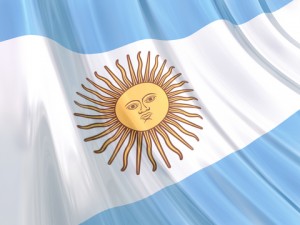 If any country can satisfy the world’s thirst for value-priced red wines, it’s Argentina.
If any country can satisfy the world’s thirst for value-priced red wines, it’s Argentina.
One of the world’s top five wine producing nations, most of its wine had traditionally been consumed by Argentinians. But the consumption rate has been falling since the 1970s when the nation’s younger generations discovered soft drinks and designer beers. Subsequently, many Argentine wineries are focusing on exports.
The country’s climate and topography is considered nearly perfect for growing grapes. The wineries are in the western part of the country stretching from the northern border down to La Pampa and Rio Negro, generally following the Andes and its foothills.
In the lower elevations, conditions are hot and dry, which is ideal for making red wines. The higher elevations provide warm, sunny days and cool nights, excellent for producing white wines.
Argentina’s climate has been described as “refrigerated sunshine.” Rainfall is modest in most regions, making irrigation vital, but snowmelt from the mountains is channeled to the vineyards and provides ample water in the growing season. Argentina continues to add quality wine with exceptional value to the international market, and the land-rich nation with the perfect climate still hasn’t reached its peak.
THE VALUES
- 2007 Kaiken Malbec, Argentina (about $14 retail)
- 2007 La Linda Bonarda, Argentina (about $10 retail)
- 2008 Trapiche Malbec, Argentina (about $10 retail)
THE SPLURGES
- 2007 Luigi Bosca Reserva Malbec, Argentina (about $18 retail)
- 2008 Dona Paula Estate Malbec, Argentina (about $20 retail)
by Lorri | Jul 7, 2010 | UnCorked
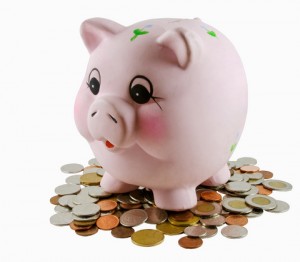 When I started writing Uncorked five years ago, the most common question was, “Can you recommend a great bottle of wine?” Today, the question is the same, with a few more words … under $20.
When I started writing Uncorked five years ago, the most common question was, “Can you recommend a great bottle of wine?” Today, the question is the same, with a few more words … under $20.
The answer is a resounding “yes.”
With the wine industry responding to consumer demand and changes in the economy, as well as shifting perceptions (great wine doesn’t have to be expensive) inexpensive, quality wines are easier to find than ever. Readily available in most retail shops, wines from California and Australia are great places to start.
It wasn’t long ago that the phrase “inexpensive Napa Valley Cabernet” was a true oxymoron. But many existing producers as well as newcomers are shifting their focus from cult winemaking to everyday winemaking.
THE VALUES
- 2009 Cline Cellars California Viognier, California (about $11 retail)
- 2008 Bogle Vineyards Merlot, California (about $10 retail)
- 2009 Renwood Lodi Viognier, California (about $12 retail)
THE SPLURGES
- 2009 Seghesio Winery Pinot Grigio, California (about $19 retail)
- 2009 Estancia Chardonnay, California (about $15 retail)
In the latter part of the 20th century, when the rest of the wine world was busy creating premium wines in the $50-$100 range, Australian producers were standing in an oversupply of grapes. This overabundance, along with consumer response, led to the Land Down Under garnering a reputation for quality, inexpensive wines. Today, Australia continues to offer great values, but with a larger than ever oversupply of grapes, consumers should remain with reputable producers who consistently offer quality wines.
THE VALUES
- 2008 Lindemans Shiraz, Australia (about $10 retail)
- 2009 Yalumba Y Series Riesling, Australia (about $13 retail)
THE SPLURGES
- 2008 Jim Barry Cover Drive Cabernet Sauvignon, Australia (about $23 retail)
- 2008 Grant Burge Miamba Shiraz, Australia (about $21 retail)
by Lorri | Jun 30, 2010 | UnCorked
 This July Fourth, I will be celebrating the United States’ independence, but I will also be reflecting on the day America gained its independence as a respected wine nation.
This July Fourth, I will be celebrating the United States’ independence, but I will also be reflecting on the day America gained its independence as a respected wine nation.
For centuries fine wine was confined inside the boundaries of prestigious European vineyards in regions such as Bordeaux and Burgundy. Mention of cabernet sauvignon or pinot noir was found only in tasting notes or journals from noble families or those who acquired prestige or wealth enough to travel across the Atlantic. These were the privileged few who savored the sacred consumption of the world’s fine wines.
But, in 1976 a Paris wine retailer, alongside Britain’s Steven Spurrier, organized a unique and original blind wine tasting of California versus France. California wines were brought not only against historic wine greats, but also against the discerning taste of the world’s most elite palates.
This blind tasting resulted in California receiving an overall rating of superior when the winners were announced: a 1973 Stag’s Leap Cabernet and a 1973 Chateau Montelena Chardonnay. You can only imagine the shock wave it sent ’round the world from the outcome of this competition.
George Taber, the only American journalist who attended and thought the event to be newsworthy, tells the story of this day of independence. His famous account of this tasting is revealed in his book, Judgment of Paris: California vs. France and the Historic 1976 Paris Tasting That Revolutionized Wine.
The 2008 docudrama Bottle Shock, available on DVD, also tells the story of the competition, but from a different perspective.
THE VALUES
- 2008 Rodney Strong Sonoma Zinfandel , California (about $20 retail)
- 2009 Bonny Doon Big House White, California (about $11 retail)
- 2008 Bouchaine Pinot Noir Carneros, California (about $20 retail)
THE SPLURGES
- 2007 Robert Mondavi Napa Valley Cabernet Sauvignon, California (about $38 retail)
- 2006 Grgich Hills Napa Chardonnay, California (about $58 retail)
- 2004 Bell Vineyards Clone 6 Cabernet Sauvignon, California (about $98 retail)
by Lorri | Jun 23, 2010 | UnCorked
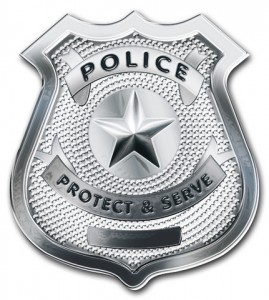 Acting as the wine police when dining out is the last of my intentions. But several times in the past few months, the question of a wine’s temperature has marred my dining experience. Not that I have a wine thermometer tucked in my handbag, but when wines are served too warm or too cold they lose their luster.
Acting as the wine police when dining out is the last of my intentions. But several times in the past few months, the question of a wine’s temperature has marred my dining experience. Not that I have a wine thermometer tucked in my handbag, but when wines are served too warm or too cold they lose their luster.
The technical reasons for serving wine at the ideal temperature is to bring out its aroma characteristics and depth of taste. From the consumer’s point of view, it’s simply disappointing to drink a wine that isn’t at its best simply because it is the wrong temperature. If a white wine is served too cold, it rarely tastes like anything more than an extremely cold beverage. Reds served too warm lose fruit and structure, leaving only the taste of the alcohol.
Red wine is best served from 58 to 65 degrees, and whites are best from 45 to 52 degrees, much higher than refrigerator temperatures. The type and style of wine plays a role in the ideal temperature. For whites, the more delicate styles are served on the warm end of the scale, and dessert and sparkling wines taste best on the cooler end.
For many people, wine is an essential part of a pleasurable dining experience. It is appropriate to ask your waiter to slightly cool your red wine if it is too warm, or to request that a white be chilled further.
If you are the host, in a pinch wine can be chilled by placing the bottle in a water and ice bath for about 10 minutes, or a quick freezer chill for about 10 to 15 minutes will do the trick.
As tempting as it may be, don’t add ice cubes to wine to hasten chilling. A good quality wine has a balance of water, sugar, acid, tannin and alcohol. Dropping ice cubes into the glass or decanter will upset this balance and leave you with a watery, poor-quality beverage.
by Lorri | Jun 16, 2010 | UnCorked
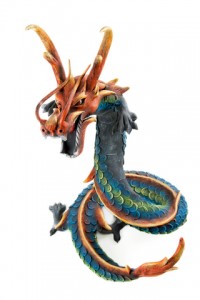 Spicy, Asian and fusion foods are quickly becoming mainstream for many Americans, but when it comes to wine pairings most of us are still adrift. Traditionally, wine and food pairing has been a regional affair — matching local food with local wines. But these newcomers such as Thailand and India aren’t known for having thriving wine regions.
Spicy, Asian and fusion foods are quickly becoming mainstream for many Americans, but when it comes to wine pairings most of us are still adrift. Traditionally, wine and food pairing has been a regional affair — matching local food with local wines. But these newcomers such as Thailand and India aren’t known for having thriving wine regions.
When matching wine with Indian food, most will offer a one-word answer: beer. It isn’t that a wine can’t match the spicy taste of curry, but generally the bold flavors of the food simply overwhelm the wine. But, not all Indian dishes are fiery hot. There are many styles and differing degrees of spiciness. For milder Indian dishes, consider crisp whites and roses and for hotter dishes opt for riper, more full-bodied wine.
Indian: Sauvignon Blanc, Semillon, Riesling, Gewurztraminer
THE VALUE
- 2009 Pine Ridge Viognier/Chenin Blanc, California (about $14 retail)
THE SPLURGE
- 2009 Spy Valley Sauvignon Blanc, New Zealand (about $24 retail)
Thai food is generally spicy-hot but the main flavors — ginger, lime, lemongrass and coriander — are all surprisingly wine-friendly. Look for wines with high acidity to tackle the spiciness, sparkling to cut through the grease of tempura, and avoid tannin at all cost. The tannins of wine mixed with the spicy, hot and sometimes sour flavors in Thai will make the wine taste bitter.
Thai: Muscadet, Sauvignon Blanc, Verdelho, Chardonnay, Albarino
THE VALUE
- 2008 Root One Chardonnay, Chile (about $12 retail)
THE SPLURGE
- 2008 Argyle Willamette Valley Chardonnay, Oregon (about $20 retail)
Chinese food is not the easiest of cuisines to tackle, and that may be why sake has generally been the wine of choice for centuries. Chinese cuisine ranges from the delicate, refined flavors of Cantonese to the distinctly hot Szechuan. Consider white wines with a slight touch of sweetness or light fruity reds.
Chinese: Riesling, Gewurztraminer, Semillon, Chenin Blanc, Pinot Grigio
THE VALUE
- 2009 Bloom Riesling, Germany (about $10 retail)
THE SPLURGE
- 2007 Hugel Gewurtztraminer, France (about $40 retail)
 A few weeks ago I ran into a store and quickly grabbed a bottle of white wine. I was hot, it was chilled and dinner was desperately simple so not much thought went into my purchase.
A few weeks ago I ran into a store and quickly grabbed a bottle of white wine. I was hot, it was chilled and dinner was desperately simple so not much thought went into my purchase. If any country can satisfy the world’s thirst for value-priced red wines, it’s Argentina.
If any country can satisfy the world’s thirst for value-priced red wines, it’s Argentina. When I started writing Uncorked five years ago, the most common question was, “Can you recommend a great bottle of wine?” Today, the question is the same, with a few more words … under $20.
When I started writing Uncorked five years ago, the most common question was, “Can you recommend a great bottle of wine?” Today, the question is the same, with a few more words … under $20. This July Fourth, I will be celebrating the United States’ independence, but I will also be reflecting on the day America gained its independence as a respected wine nation.
This July Fourth, I will be celebrating the United States’ independence, but I will also be reflecting on the day America gained its independence as a respected wine nation. Acting as the wine police when dining out is the last of my intentions. But several times in the past few months, the question of a wine’s temperature has marred my dining experience. Not that I have a wine thermometer tucked in my handbag, but when wines are served too warm or too cold they lose their luster.
Acting as the wine police when dining out is the last of my intentions. But several times in the past few months, the question of a wine’s temperature has marred my dining experience. Not that I have a wine thermometer tucked in my handbag, but when wines are served too warm or too cold they lose their luster. Spicy, Asian and fusion foods are quickly becoming mainstream for many Americans, but when it comes to wine pairings most of us are still adrift. Traditionally, wine and food pairing has been a regional affair — matching local food with local wines. But these newcomers such as Thailand and India aren’t known for having thriving wine regions.
Spicy, Asian and fusion foods are quickly becoming mainstream for many Americans, but when it comes to wine pairings most of us are still adrift. Traditionally, wine and food pairing has been a regional affair — matching local food with local wines. But these newcomers such as Thailand and India aren’t known for having thriving wine regions.